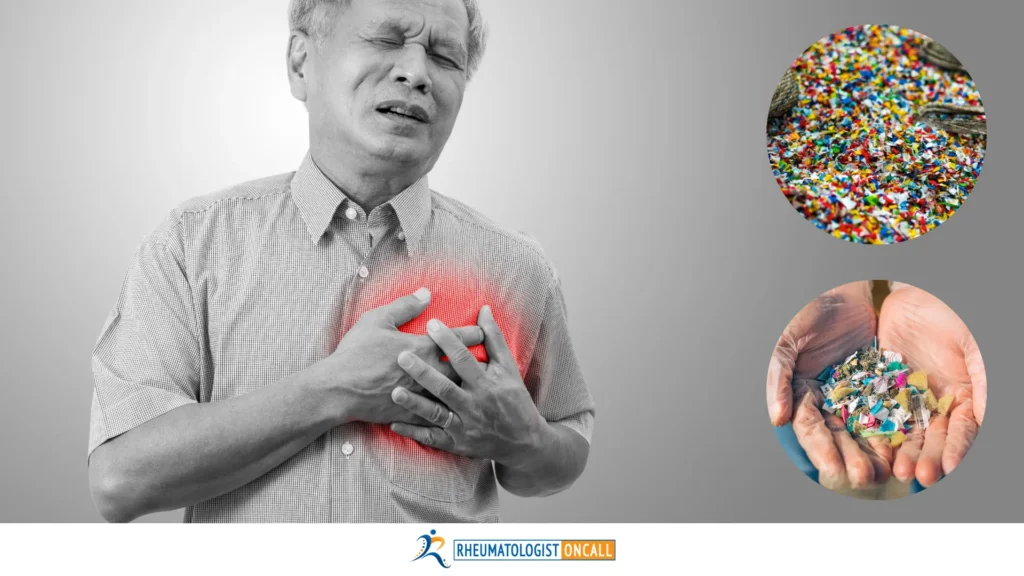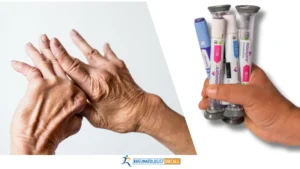SHARE
In recent years, the term “microplastics” has become increasingly common in environmental discussions. But what exactly are these tiny particles, and why should we be concerned about them? A groundbreaking study published in Nature this year ( 2024) has shed light on a potential link between microplastics and heart disease, adding to growing concerns about their impact on human health.Microplastics and Heart Disease: A Deeper Look
A recent study published in Nature this year (2024) has provided compelling evidence linking microplastics to heart disease. The research, conducted on 300 patients undergoing carotid endarterectomy (a surgical procedure to remove plaque from the carotid artery), revealed startling findings:
What Are Microplastics and Nanoplastics?
Microplastics are tiny plastic particles smaller than 5 millimeters in size. Their even smaller counterparts, nanoplastics, measure less than 1000 nanometers in size. These particles come from the breakdown of larger plastic items and are now ubiquitous in our environment – found in our food, water, air, and, alarmingly, in our bodies.A Brief History of Plastics
The synthetic plastics era began in 1907 when Belgian chemist Leo Baekeland invented Bakelite, the first fully synthetic plastic. This revolutionary material, combining formaldehyde and phenol, sparked a consumer boom in affordable, mass-produced products. From there, plastic production exploded:- 1930s-1940s: Mass production of various plastics begins
- 1950s: “Throwaway Living” concept promotes single-use plastics
- 2019: Global plastic production reaches 368 million metric tons
Microplastics and Heart Disease: A Deeper Look
A recent study published in Nature this year (2024) has provided compelling evidence linking microplastics to heart disease. The research, conducted on 300 patients undergoing carotid endarterectomy (a surgical procedure to remove plaque from the carotid artery), revealed startling findings:- 58.4% of patients had polyethylene in their arterial plaque
- 12.1% also had measurable amounts of polyvinyl chloride (PVC)
- Patients with these microplastics were 4.5 times more likely to experience heart attacks, strokes, and death during the follow-up period of 34 months.
Understanding the Hazard Ratio
The study reported a Hazard Ratio of 4.53. In simple terms, this means that patients with detectable microplastics in their arterial plaque had 4.53 times the risk of experiencing a heart attack, stroke, or death compared to those without detectable microplastics.Potential Mechanisms
While the study doesn’t prove causation, it suggests several ways microplastics might impact cardiovascular health:- Direct damage to blood vessels: The jagged edges of microplastic particles could potentially cause micro-injuries to the arterial walls.
- Promotion of inflammation: The presence of foreign particles may trigger inflammatory responses in the arteries.
- Oxidative stress: Microplastics might induce oxidative stress in cells lining the blood vessels.
- Carrier for other toxins: Microplastics could potentially carry other harmful substances into the arterial walls.
Implications for Cardiovascular Health
These findings raise significant concerns about the long-term impact of microplastic exposure on heart health. If confirmed by further studies, microplastic exposure could represent a new risk factor for cardiovascular disease, potentially influencing future prevention and treatment strategies.How Microplastics Might Affect Our Immune System
Microplastics, ubiquitous in our environment, may play a significant role in developing and exacerbating autoimmune diseases. While this field of study is still in its infancy, researchers have identified several potential mechanisms through which these microscopic plastic particles might influence our immune system:
1. Immune System Activation
Studies indicate that the immune system can recognize microplastics as foreign entities, similar to how it identifies pathogens. This recognition may trigger immune responses, potentially leading to chronic inflammation (low-grade inflammation) – a known contributor to many autoimmune conditions.
2. Gut Microbiome Disruption
Another article in Nature in 2022 has revealed that microplastics can alter the composition and function of the gut microbiome. The gut microbiome, comprising trillions of microorganisms, plays a crucial role in immune regulation. Perturbations to this complex ecosystem could have far-reaching consequences for immune function. By disrupting the gut microbiome, microplastics may indirectly influence the development and progression of autoimmune disorders.
3. Molecular Mimicry
Some researchers hypothesize that certain plastics or their additives might exhibit molecular structures similar to those of hormones or other biological molecules. This phenomenon, known as molecular mimicry, could potentially confuse the immune system, leading it to mistakenly target the body’s own tissues. Such misdirected immune responses are a hallmark of autoimmune diseases. If microplastics indeed trigger molecular mimicry, they could serve as environmental factors contributing to the onset of autoimmune conditions in genetically susceptible individuals.
Specific Autoimmune Conditions
While research is ongoing, early studies have suggested potential links between microplastic exposure and several autoimmune conditions:- Rheumatoid Arthritis: A study found that exposure to certain plastic-associated chemicals aggravated the cartilage damage in rheumatoid arthritis.
- Inflammatory Bowel Diseases: Given the impact of microplastics on gut health, researchers are investigating potential links to conditions like Crohn’s disease and ulcerative colitis.
Health Concerns and Future Research
The presence of microplastics in our bodies raises several red flags:- Widespread exposure is nearly unavoidable
- The long-term effects of lifelong exposure are unknown
- Potential for accumulation in our bodies over time
- Possible impacts on both cardiovascular and immune health and other organs
Quick Guide to Reducing Your Microplastic Exposure
While it’s challenging to avoid microplastics completely, here are key steps to minimize your exposure:1. Reduce Single-Use Plastics
- Use reusable shopping bags, water bottles, and coffee cups
- Avoid plastic straws and utensils
- Choose products with minimal plastic packaging
2. Choose Natural Fibers
- Opt for clothes made from cotton, wool, or linen instead of synthetic fabrics
- Use a microfiber-catching laundry bag for synthetic items
3. Filter Your Water
- Install a quality water filter on your tap or use a filtration pitcher
- Avoid bottled water when possible
4. Be Careful with Food Storage
- Use glass, ceramic, or stainless steel containers for storing and reheating food
- Never microwave food in plastic containers
5. Buy Fresh, Unpackaged Foods
- Shop at farmers’ markets or use bulk bins at grocery stores
- Choose fresh produce over pre-cut or packaged options
6. Check Personal Care Products
- Avoid products containing microbeads
- Choose items packaged in glass or metal when possible
7. Keep a Clean Home
- Vacuum regularly with a HEPA filter
- Dust with a damp cloth to trap particles















